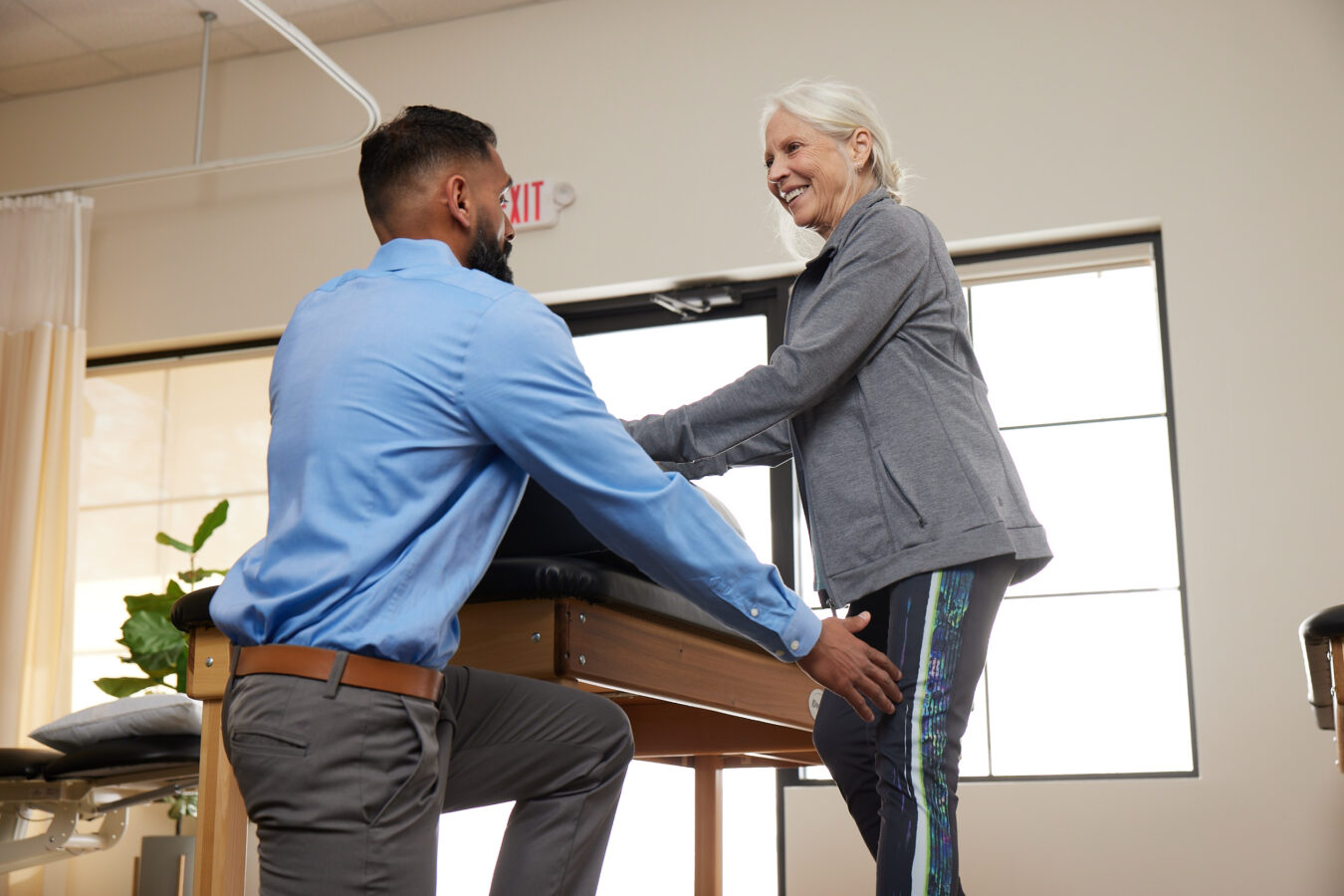
Parkinson’s disease is a condition of the brain that causes uncontrollable tremors, stiffness, and difficulty with coordination and balance. According to the Parkinson’s Foundation, one million people in the United States currently live with this disorder and approximately 60,000 people are newly-diagnosed every year. At this time there is no cure for the disease, however many treatments and therapies are available to improve symptoms or slow their progression.
Parkinson’s disease is linked to certain cells in the basal ganglia, the part of the brain that controls movement. These nerve cells normally produce a brain chemical called dopamine. If they become damaged or die, they cannot produce enough dopamine. That dopamine loss leads to movement problems which are indicative of Parkinson’s Disease.
Individuals with with this condition also loose nerve endings that produce norepinephrine, a hormone and neurotransmitter in the sympathetic nervous system. It regulates the “fight or flight” response and other body functions including blood pressure, heart rate, and energy levels. Parkinson’s Disease symptoms like blood pressure irregularities and sluggish digestion.
Scientists do not fully understand why these changes happen in individuals with Parkinson’s disease. Some believe the answer is a combination of genetic and environmental factors.
Parkinson’s symptoms and their severity and rate of progression vary from person to person:
Signs of Parkinson’s disease can be as subtle as trouble moving an arm or leg or getting up out of a chair. In most individuals with Parkinson’s Disease, symptoms present in one side of the body and gradually move to both sides of the body as the disease progresses. The condition often produces a tell-tale gait where the person leans forward and takes short, quick steps when walking.
While every person and their symptoms are unique, Parkinson’s disease does have a general pattern of progression. This pattern is classified in five stages.
Symptoms are mild symptoms and may not interfere with daily activities.
Daily tasks become more challenging and take longer to complete.
Symptoms may impair eating, dressing, and other daily activities.
Assistance is required for daily activities and movement may require a walker.
Symptoms may be so severe that round-the-clock care is necessary.
Not every person with Parkinson’s Disease will experience symptoms in the same order or intensity. These stages can be used as a guide to help you understand possible changes so you can better manage them as they occur.
With an efficient care strategy, Parkinson’s. symptoms can be slowed or improved.
Prescriptions medications, surgical treatments, clinical trials, and therapies are available to treat Parkinson’s Disease symptoms. If you are diagnosed with Parkinson’s, your treatment plan is customized based on your health history, lifestyle, and Parkinson’s stage and symptoms.
Medications can increase dopamine levels in the brain, affect the way other key brain chemicals send messages between cells, and control both involuntarily moments and non-movement symptoms.
Deep brain stimulation (DBS) may be prescribed for people who don’t have good results with medication. DBS is a surgical procedure where a doctor implants a small electrical device in the chest.
The device is connected to electrodes implanted in the brain. Together, the electrodes and device stimulate the parts of the brain that control movement, improving tremors, rigidity, and other Parkinson’s Disease symptoms.
Lifestyle changes are another key way to help manage symptoms and help individuals with Parkinson’s Disease feels better. A healthy lifestyle includes a balanced and nutritious diet, plenty of sleep, and regular exercise.
Physical therapy is beneficial at every stage of Parkinson’s disease. Physical activity that is recommended and approved by your healthcare provider and physical therapist can slow the course of the disease and relieve symptoms. In fact, The Parkinson’s Outcome Project found that at least 2.5 hours of exercise per week to slow the decline in quality of life.
A physical therapist specializing in neurological conditions improves the lives of people with Parkinson’s through:
The Lee Silverman Voice Technique (LSVT-BIG) is an intensive physical therapy regimen delivered by specially-trained physical therapists to slow the progression of symptoms and improve motor and speech function.
The technique was initially created to focus on the speech motor system symptoms associated with the disease. Later, the therapy program expanded to add the “BIG” component which addresses limb motor difficulties people with Parkinson’s Disease typically experience. LSVT-BIG incorporates large, exaggerated exercises that create smoother, safer movements for an increased quality of life.
To begin a physical therapy regimen for Parkinson’s Disease symptoms, start with a baseline PT evaluation to assess your symptoms. Your PT plan is customized based on your health history, lifestyle, and stage and symptoms.
Ask your healthcare provider if physical therapy is right for you or visit a clinic near you to learn more about the benefits of physical therapy for improving balance, posture, and movement in individuals with Parkinson’s disease.
